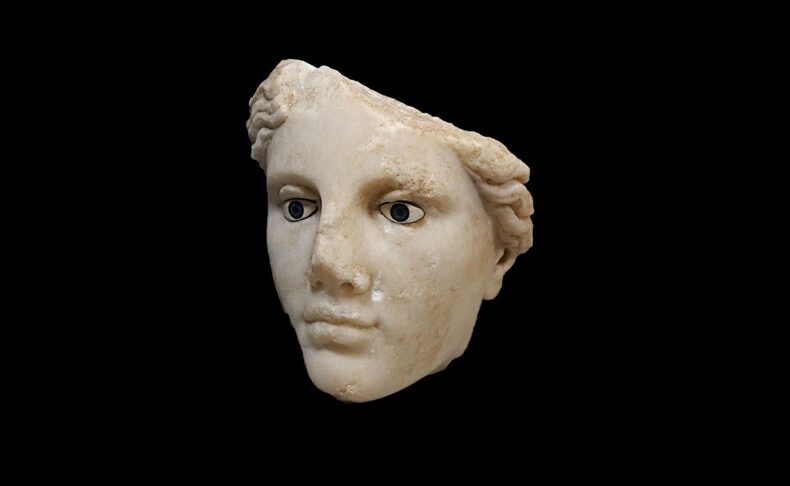
Monumental Hellenistic Goddess Head Unearthed in Metropolis: Early Analysis Suggests a Link to Hestia
The ancient city of Metropolis, set among the orchards and gentle hills of Izmir’s Torbalı district, has delivered one of its most impressive finds in recent years. Archaeologists working in a structure identified as a commercial building have uncovered the finely carved head of a monumental marble statue—a discovery that may redefine what is known
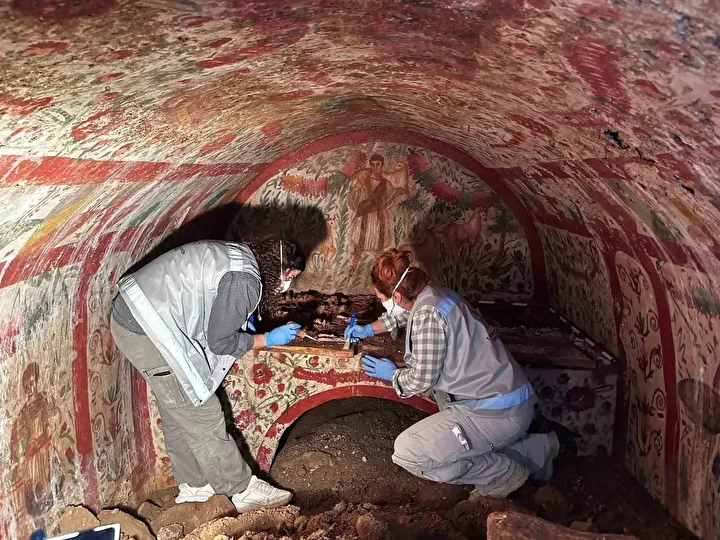
A Rare “Good Shepherd” Depiction Emerges from a Hypogeum Tomb in İznik
A quiet corner of Hisardere Nekropolü in İznik has produced a discovery that specialists are calling one of the most remarkable Early Christian finds in recent years: a painted “Good Shepherd” (Çoban İsa) figure, believed to be the only example of its kind ever documented in Anatolia. The scene was uncovered inside a carefully constructed
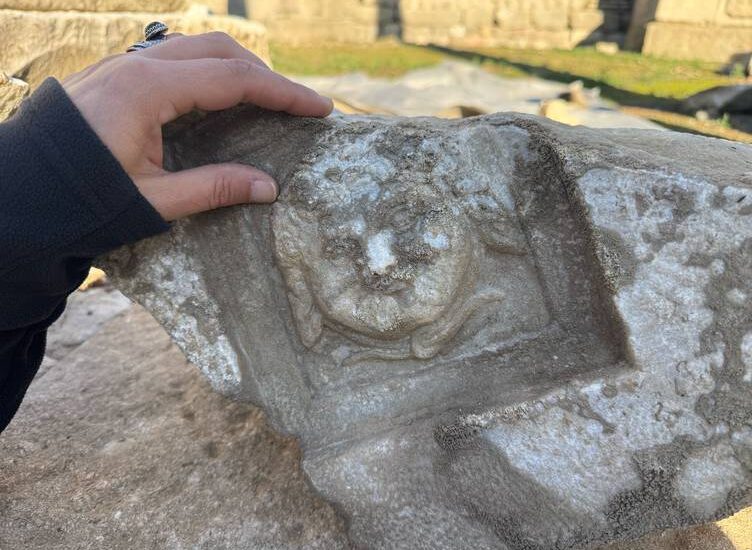
A Smiling Medusa Discovered in the Ancient City of Amastris on Türkiye’s Black Sea Coast
Archaeologists working in Amasra have uncovered a highly unusual depiction of one of antiquity’s most iconic mythological figures. A Medusa carved not with a terrifying expression, but with a gentle, almost smiling face has been found among the ceiling coffers of a monumental Roman stoa. The discovery offers a new perspective on the artistic choices

28 Antiquities Are Returning to Türkiye from the U.S., Including Boubon’s Lost Bronze Emperor
Twenty-eight looted antiquities are being repatriated from the United States to Türkiye, led by the long-missing bronze statue of a Roman emperor from the ancient city of Boubon. The group also includes a marble head of Demosthenes and several terracotta tablets from Düver—objects that disappeared decades ago before resurfacing in American collections. The Turkish Ministry

A 2,000-Year-Old Incense Burner Depicting the Egyptian God Serapis Discovered in Ephesus
Archaeologists in the ancient city of Ephesus have uncovered a finely modeled terracotta incense burner carved with the likeness of the Egyptian god Serapis, adding a striking new piece to the puzzle of cultural exchange in Roman Anatolia. The artifact was unearthed during ongoing excavations at the monumental Harbor Bath complex on the city’s 570-meter-long
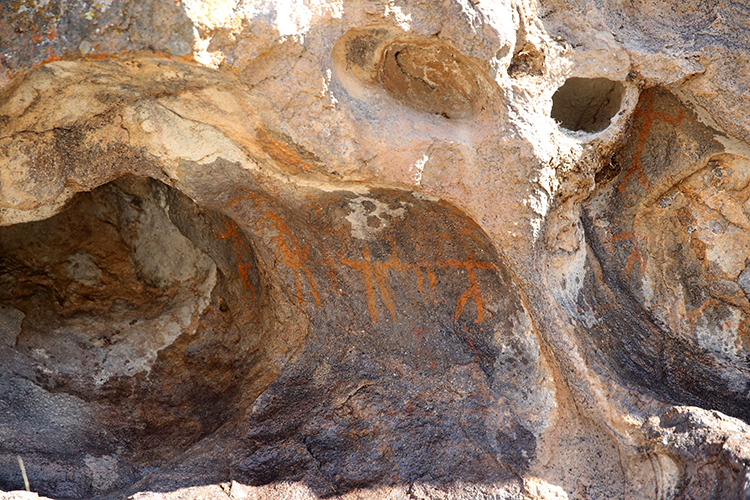
Neolithic Rock Art Discovered in Central Türkiye After Hiker Spots Ancient Cliff Figures
A routine walk through the mountains of central Türkiye has led to a discovery that could reshape the prehistoric timeline of the region. A local resident exploring a remote highland area noticed faint yet distinctive human-shaped markings on a rock face and immediately reported the find to authorities. Early examinations indicate that the figures belong
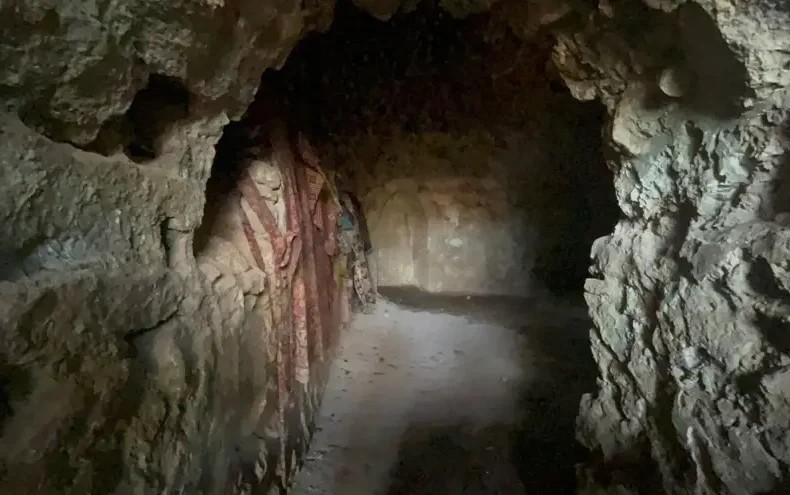
Hikers Stumble Upon a Mysterious Underground Mosque of Unknown Date in Batman’s Gömek Plateau
What began as a routine nature walk in the rugged highlands of Batman turned into one of the region’s most unexpected heritage discoveries in recent years. A group of hikers and local villagers exploring the Gömek Plateau near the dramatic ravine known as Cehennem Deresi happened upon a narrow opening in the rock face. What
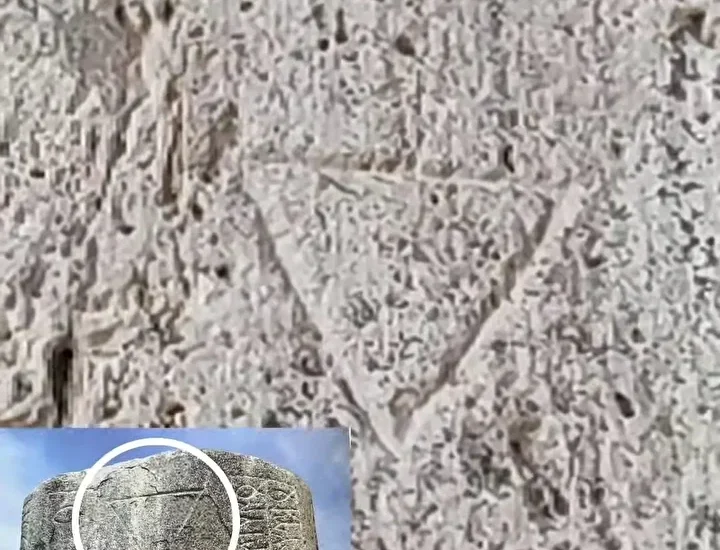
A Seljuk Caravanserai Reveals Rare Mongol and Turkic Tamgas: New Inscriptions Emerge at Çardak
A 13th-century waystation in western Türkiye is drawing fresh attention after the discovery of two highly unusual symbols — the Mongol Ulzii motif and a Turkic tamga associated with Bilge Tonyukuk. When the Seljuk caravan routes crossed the vast interior of Anatolia, they created more than commercial arteries; they forged a landscape of cultural exchange.
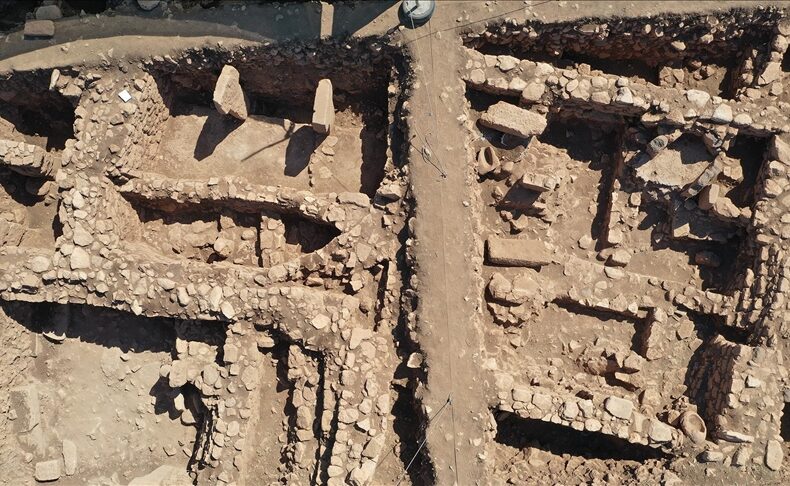
A Newly Identified Boar Piglet Engraving Emerges from Sefertepe’s 2025 Excavations
The 2025 excavation season at Sefertepe, a rapidly emerging Neolithic site within the broader Taş Tepeler landscape of southeastern Türkiye, has brought to light a striking example of early symbolic expression. During ongoing fieldwork directed by Assoc. Prof. Dr. Emre Güldoğan of Istanbul University’s Department of Prehistoric Archaeology, researchers identified a finely incised depiction of
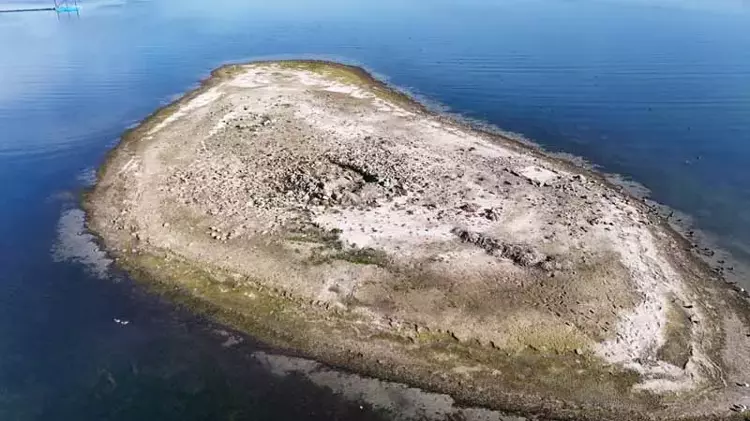
Newly Exposed Mosaic Structure in Lake Sapanca May Belong to a Late Antique Chapel, Researchers Say
As water levels recede in Lake Sapanca, a mosaic-floored building resurfaces, prompting renewed archaeological interest. The falling water level of Lake Sapanca in northwestern Türkiye has revealed a mosaic-paved structure that had remained submerged for centuries. As stone foundations and sections of patterned flooring emerged from the lakebed, specialists began reassessing the site’s function and
